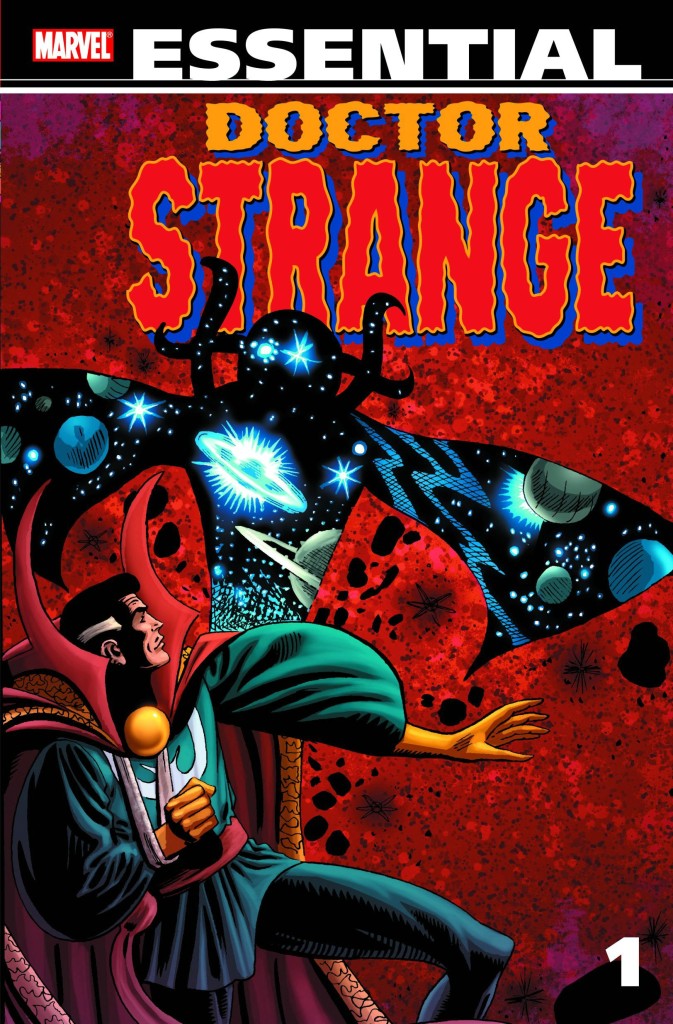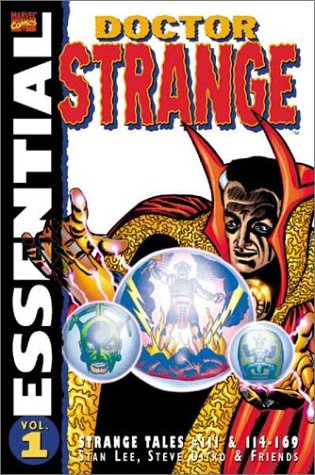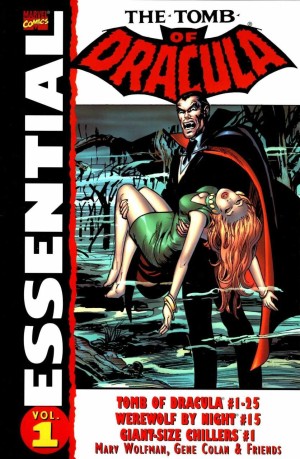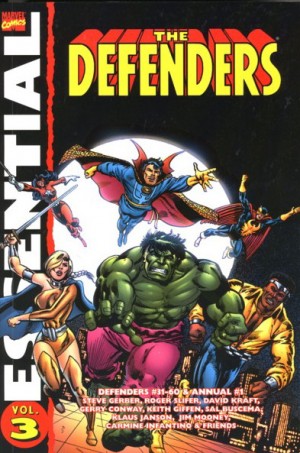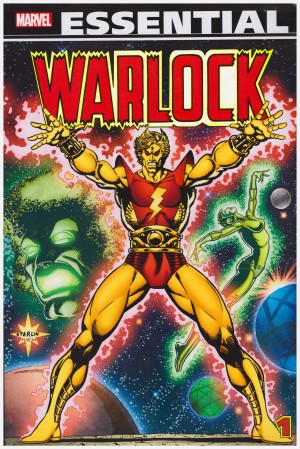Review by Graham Johnstone
This volume starts with the first story Doctor Strange story in 1963 and continues with every solo tale up to 1968 – this includes Steve Ditko’s classic run of three hundred odd pages.
The creative roles and relative contributions of Stan Lee and his artist partners has been much debated. It seems accepted though that Ditko conceived Doctor Strange as a short for Strange Tales – one of Marvel’s long-running science fiction/horror/mystery anthologies.
The initial stories are short one-offs, involving haunted houses and dangerous idols, fitting easily into the existing format. It wasn’t until months later, sure of the demand, that there was an origin story. Tibetan mystic the Ancient One has two disciples – the secretly power-hungry Baron Mordo, and the initially vain and selfish, but ultimately good, Steven Strange. These two become arch rivals fighting for our world. It has the mythic, archetypal core that’s much of the reason these early Marvel characters have run for so long.
Strange was supposedly inspired by radio show Chandhu the Magician – he had similar powers and learned his skills from an eastern yogi, for whom he acted as a physical agent in the world. The Marvel version topped this with the brilliant artwork of Steve Ditko – his depiction of magical worlds and phenomena, remains some of his finest work.
Ditko drew on a range of sources. Look at the furniture and bric-a-brac in Strange’s apartment: the lizard/dragon statues, the curved shapes and inlays in the furniture. They’re gothic, but as if filtered through the Aesthetic art movement of the 19th Century. You can also see it in the elongated figures and hands. It has the ‘orientalist’ look of Aubrey Beardsley’s Salome – the tapering, intersecting curves of the magic spells. The depiction of magical dimensions draws on Surrealism – the melted and floating elements of Dali, and Yves Tanguy.
Ditko turns this melange into something quite his own. In particular he makes great use of the ink lines. Take for example, the early story of Tiboro: Strange communicates with the distant Ancient One through a window of swirling, rippling rings; next he contains the idol of Tiboro within a single heavy, slightly rippled line; finally, when he decides to follow the missing people into Tiboro’s world, we see him inside a ringed cone being funnelled into the tiny idol.
The highlight here is the extended story arc where Dr Strange battles his earthly rival Baron Mordo, and powerful ruler of an alternative dimension, Dormammu. Mordo hunts Strange, who in turn searches for the secret of Eternity. It’s a gripping story, packed with memorable scenes: Mordo’s wraiths chasing Dr Strange’s ‘ectoplasmic’ form through a busy airliner, Strange flying through giant atoms into the sun to shake off the cowardly Mordo, and best of all the episode where Strange seeks to retrieve the secret of Eternity within the mind of the physically comatose yet mentally powerful Ancient One.
Credit is due to Lee as editor for the survival of the series after Ditko’s sudden departure. Dan Adkins, Marie Severin, and particularly Bill Everett supply solid art. Despite five different people taking shots at scripting, the series remained entertaining and in the spirit of the Ditko years.
This material is also collected in colour in Marvel Masterworks: Doctor Strange volumes 1 and 2. The enduring following for this material is reflected in the variously inflated prices for all editions.
